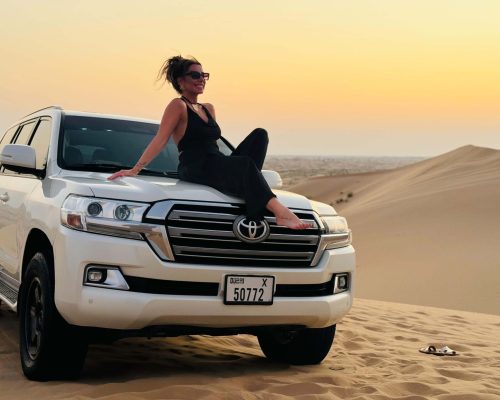The idea of a desert adventure with vast sandscapes, beautiful sunsets, and thrilling off-road driving is highly popular. Many dream of tackling the sand in their vehicle to give it a personal touch. But can you go on a desert safari in your car? The answer is yes but under just a few conditions.
Knowing the Land and What It Takes
Not all deserts are the same. There are some stretches with relatively firm sand, where an experienced driver should have little difficulty if equipped with the right vehicles. However, other places with dunes and soft patches are tricky and require special skills and gear. Do your research on the particular desert you are visiting. Determine the type of sand you are dealing with, how challenging the terrain is, and any restrictions in the area.
Your Car Counts: Not Any Old Car Makes the Grade
It’s what gets you moving first. Some vehicles are not suitable for driving in the desert. A car needs 4×4 or four-wheel drive and loads of ground clearance to be effective. It keeps the car elevated enough to navigate the irregularities of the terrain and prevents it from getting stranded in the dunes.
1. Alter Tire Inflation:
Taking some air out of your tires will improve their grip on the sand by increasing the contact area. The proper pressure is a must-know concerning the type of sand.
2. Having Sand Boards/Recovery Tools:
It is a must to have sandboards (or similar things to help with traction) and tools like a tow rope and shovel to get you unstuck if you get stuck.
3. Monitoring Engine Temperature:
Desert driving is hard on an engine. Check the temperature gauge to prevent overheating.
4. Skill in Driving Is Essential: Over 4×4
Only having a 4×4 does not automatically qualify you to drive in the desert. You should have good driving experience in the dirt, particularly in sandy conditions. You can learn how to drive over dunes, keep your speed up, and avoid common problems, such as getting stuck through practice.
- Precautions Against Danger: Plan Ahead
Desert safaris, even guided ones, can be risky. Going alone makes these risks bigger. Careful planning is a must:
- Navigation:
Deserts are disorienting. Good GPS, maps, and compasses become essential. Make sure you know your destination before heading out into the desert.
- Communication:
You can not make a call in some areas of the desert. Carry a satellite telephone or any other way to communicate in an emergency.
- Supplies:
You should carry sufficient water, food, a first aid kit, and medicines. Carry supplies for unexpected delays or breakdowns during your tour.
Conclusion
Yes, there are times you could take your car to Desert Safari. But it is not an easy decision. First, you should plan and determine the right vehicle, ensure you have proper driving skills, and understand the associated risks. If you are not an experienced driver, going on a guided tour safari is a safer option.




























